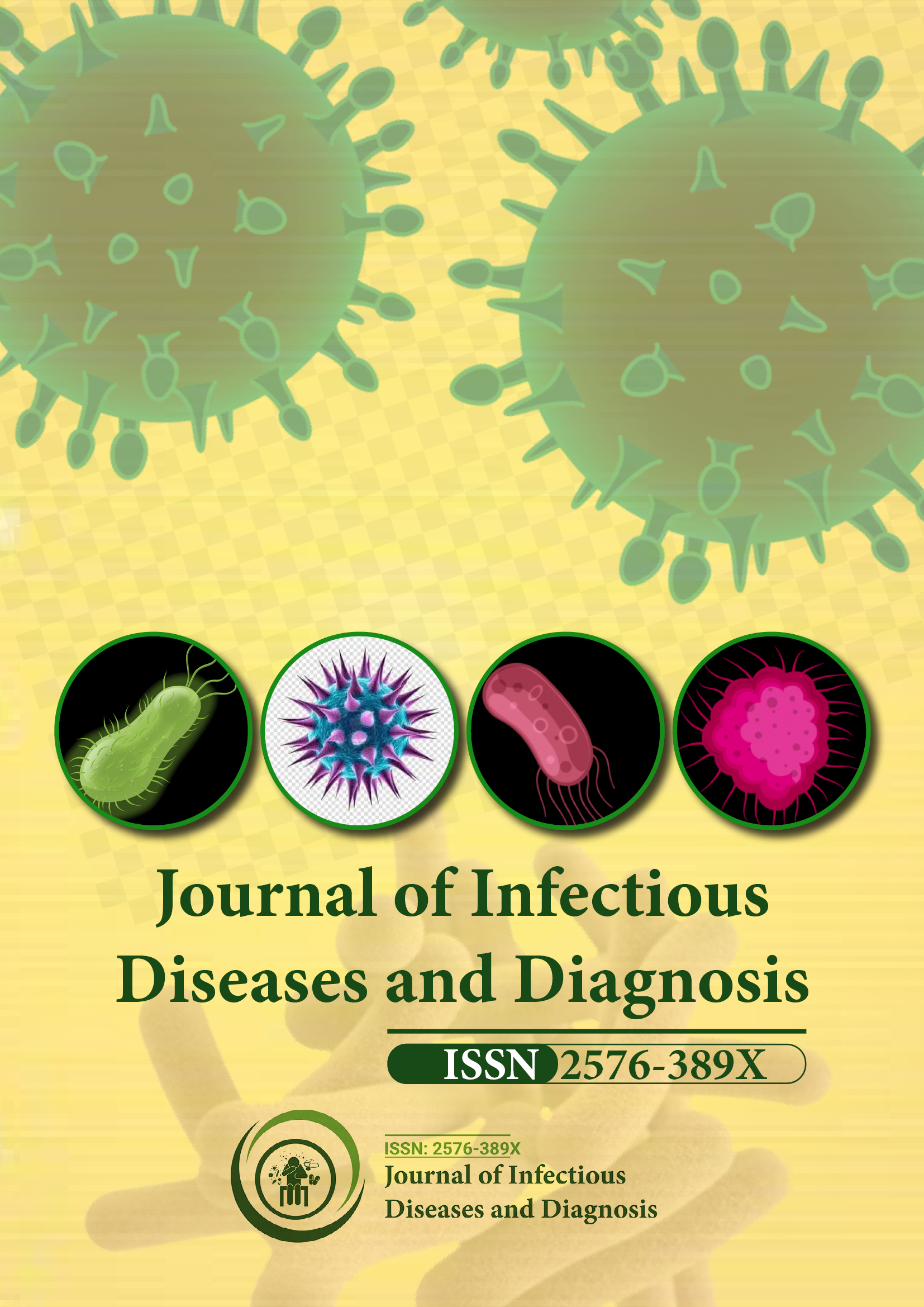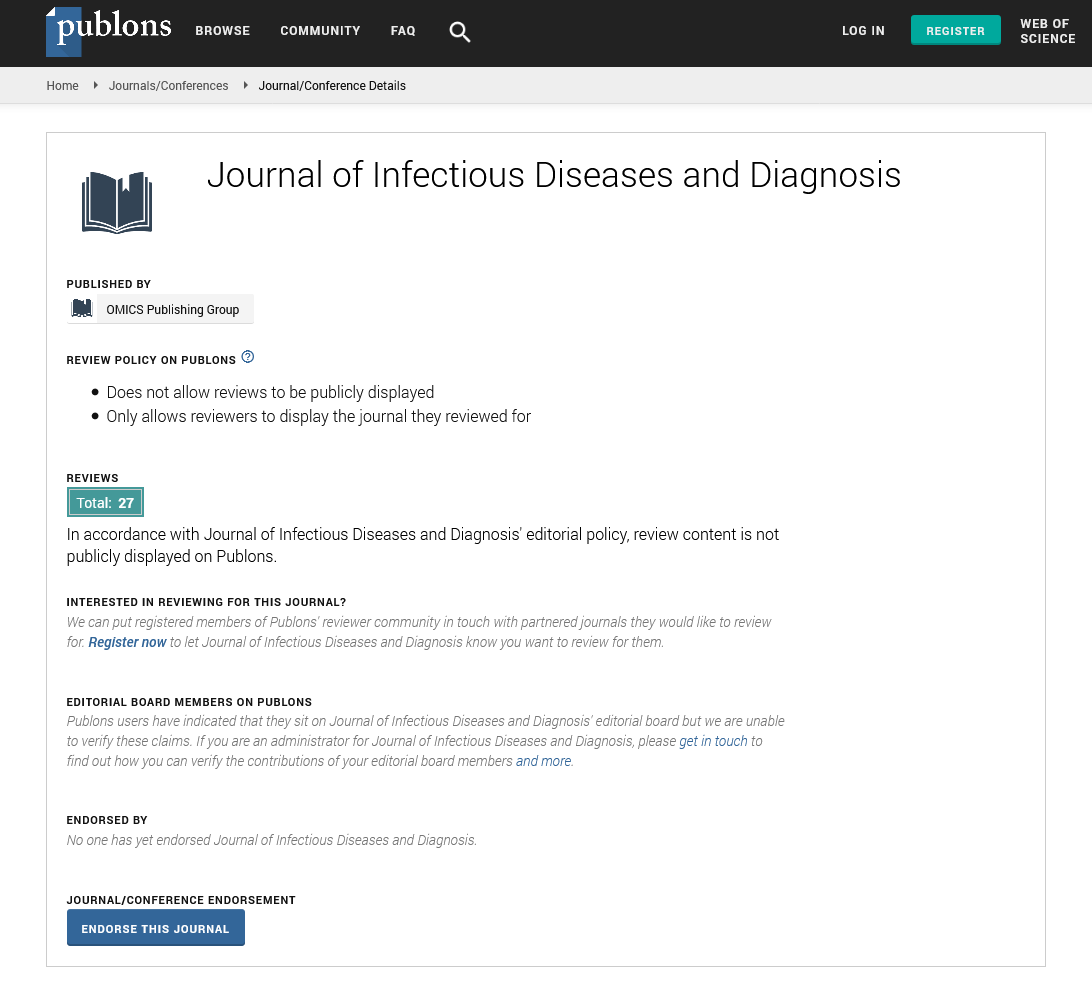Indexed In
- RefSeek
- Hamdard University
- EBSCO A-Z
- Publons
- Euro Pub
- Google Scholar
Useful Links
Share This Page
Journal Flyer

Open Access Journals
- Agri and Aquaculture
- Biochemistry
- Bioinformatics & Systems Biology
- Business & Management
- Chemistry
- Clinical Sciences
- Engineering
- Food & Nutrition
- General Science
- Genetics & Molecular Biology
- Immunology & Microbiology
- Medical Sciences
- Neuroscience & Psychology
- Nursing & Health Care
- Pharmaceutical Sciences
Commentary - (2025) Volume 10, Issue 1
Advancements in Hepatitis Diagnosis and Therapeutic Approaches
Cameron Richard*Received: 01-Jan-2025, Manuscript No. JIDD-25-28521; Editor assigned: 03-Jan-2025, Pre QC No. JIDD-25-28521 (PQ); Reviewed: 17-Jan-2025, QC No. JIDD-25-28521; Revised: 24-Jan-2025, Manuscript No. JIDD-25-28521 (R); Published: 31-Jan-2025, DOI: 10.35248/2576-389X.25.10.309
Description
Hepatitis is an inflammatory condition of the liver caused by viral infections, alcohol consumption, autoimmune disorders and toxins. Among the viral causes, hepatitis A, B, C, D and E are the most prevalent, each differing in transmission mode, clinical manifestation and long-term effects.
Hepatitis is a significant public health concern affecting millions worldwide. The disease can be acute or chronic, depending on the viral strain and host response. Acute hepatitis typically resolves within a few months, whereas chronic cases may persist, leading to liver cirrhosis, failure, or carcinoma. The World Health Organization (WHO) estimates that viral hepatitis causes over a million deaths annually, emphasizing the need for effective prevention and management strategies.
Types of Hepatitis
Hepatitis is classified into five primary types based on the causative viral agent:
Hepatitis A (HAV): Transmitted through contaminated food or water, HAV infection is self-limiting and vaccines provide effective protection.
Hepatitis B (HBV): Spread via blood, sexual contact and perinatal transmission, HBV can cause chronic infection. Vaccination has significantly reduced incidence rates.
Hepatitis C (HCV): Primarily transmitted through blood exposure, HCV often progresses to chronic liver disease if untreated. Direct-acting antiviral drugs offer a high cure rate.
Hepatitis D (HDV): Occurs only in individuals with HBV, exacerbating liver damage. Vaccination against HBV indirectly prevents HDV.
Hepatitis E (HEV): Waterborne in developing regions, HEV typically resolves on its own but can be severe in pregnant women.
Symptoms and diagnosis
Hepatitis presents with a range of symptoms, from mild to severe. Common indicators include jaundice, fatigue, nausea, abdominal pain, dark urine and loss of appetite. Chronic infections may remain asymptomatic for years, making early diagnosis essential for disease management. Laboratory tests such as liver function tests, viral serology and polymerase chain reaction (PCR) help confirm the type and severity of hepatitis.
Treatment approaches
Treatment depends on the type and severity of hepatitis:
HAV and HEV: Supportive care is typically sufficient, focusing on hydration, rest and symptom relief.
HBV: Antiviral medications such as tenofovir and entecavir help control the infection but do not provide a complete cure.
HCV: Direct-acting antivirals (DAAs) achieve over a 90% cure rate, making eradication a realistic goal.
HDV: Management includes antiviral therapy alongside HBV treatment to reduce viral replication.
Prevention strategies
Preventing hepatitis involves vaccination, hygiene practices and public health interventions. Effective vaccines exist for HAV and HBV, while research continues for HCV and HEV. Safe injection practices, blood screening and educational campaigns play an essential role in limiting transmission. Improved sanitation and clean water access reduce HAV and HEV infections in endemic regions.
Global burden and challenges
Despite progress, hepatitis remains a major global concern, particularly in low- and middle-income countries. Limited access to vaccines, diagnostic facilities and treatment options hinders eradication efforts. Stigma and misinformation further complicate disease control, necessitating continued public awareness and policy enhancements.
Conclusion
Hepatitis remains a significant health challenge, with viral strains posing varying risks. Early detection, vaccination and treatment advancements contribute to better outcomes. However, further efforts are needed to improve healthcare accessibility and public awareness, ensuring effective control and eventual elimination of hepatitis-related illnesses.
Citation: Richard C (2025). Advancements in Hepatitis Diagnosis and Therapeutic Approaches. J Infect Dis Diagn. 10:309.
Copyright: © 2025 Richard C. This is an open-access article distributed under the terms of the Creative Commons Attribution License, which permits unrestricted use, distribution and reproduction in any medium, provided the original author and source are credited.

